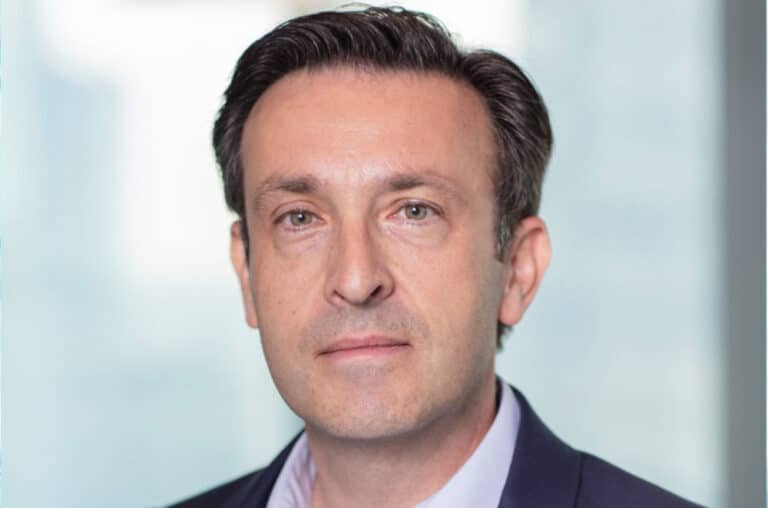
Recently I interviewed Christophe Fritsch, Head of Fund Management and Structured Finance at AXA IM Alts. It was great to get a European view of credit markets and some of the bonds they favour.
Where do you see credit markets going, and what do you think might happen in the next 12 months?
We have all seen some economic impacts from the energy market shock and the supply chain disruption. The supply chain disruption started with the COVID crisis, but the energy market has fed inflation. You may have seen recently that in Europe, the figures for inflation were higher than expected and above 8%. It’s the same in the US and UK.
I think we will continue to live with a higher level of inflation, which means two things:
- A downward revision of global GDP a little bit everywhere, US and Europe, and
- Interest rate spreads will increase gradually.
I’m giving you this picture of the macro economy because this is what will have an impact on the credit market. I think you may have seen that in the past year, the default rate on high yield (HY) bonds, and when I say ‘HY’, I encompass bonds and loans, those default rates were below 1%.
It was due to mainly tourism, low interest rates and also a big intervention of governments floating money forward in the next 24 months. So, in one to two years we should see an increase in the default rate on HY credit, perhaps going back to 1.5, 2% per year in US and perhaps 2 to 3% in Europe.
That’s not a super big default rate. If you put that in perspective, it just means that we are going to come back to a historical average in terms of default rates. And it also means that finally, portfolio managers will have to do their job, which is credit selection. I think for people who’ve been in the market only for the past 10, 15 years, they have only known about negative or 0% interest rates.
Also read: A Bond Investor’s Take On Labor’s Net Zero Commitment
We are in a world that is transitioning from those past 10 years with very low interest rates to higher interest rates. Nevertheless, they should not go to the sky. We have experienced clearly higher interest rates in the 90s. So, even if it stabilises at 3% plus in the US and a little bit lower in Europe, it just means that we need to adapt and that money for free, therefore leverage, is not for free anymore and credit will be really about selection.
An example I can give you and typically, one of the challenges today when selecting credit is obviously when you finance corporates. We analyse more and more the sector on a name-by-name basis and clearly one indicator today to invest or not is – ‘will the company be able to pass on cost increases due to inflation?’ If the answer is no, it’s already an issue for the development of the business in the next two years.
Christophe, what about spreads for investment grade and high yield? Do you see them blowing out further or do you think it’s attractive to invest in those markets now?
To me, we are currently in a volatile environment that can last a few months. So spreads have been widening a lot and you may have seen, both on investment grade and HY, I think that we’ll continue to see some volatility, so I don’t see a stabilisation on super short term spreads, nevertheless perhaps in six months when this transition from a world with low interest rates to high interest rates will have been passed, perhaps spreads will stabilise and perhaps start to decrease.
We also need to consider geopolitical conflict which is still a concern and has an impact on inflation and on credit spreads.
The other big difference in spreads is between the public and private markets.
In fact, public market spread widening has not been totally transmitted to the private markets. So, there is a little bit of increase, but not so much. Today, if we were to talk about relative value between public and private, I would say that there are opportunities in the public market, because you can source some good assets at good spreads. In private markets, we are able to negotiate better conditions than before. So, quality is also super important. For me, it’s not just a question of spread, this volatility can last for a few weeks or a few months.
Interesting. You have a specialty in asset backed securities. Can you just talk about opportunities in that market at the moment, are you mainly talking from a European perspective or a global perspective?
In terms of structural finance, we manage EUR57 billion (AUD 80 billion). While we are Asset Backed Security specialists, we also invest in all sorts of alternative credits, from bank loans to collateralised loan obligations, mortgages, private financing. We are a global asset manager. We manage assets in Europe and in the US and we also invest in Australian ABS.
Our knowledge is global, but on your question about ABS more specifically, it’s an asset class, you’re right, that we like, because it provides pretty good performance in the current environment.
Also read: There Is No Alternative (TINA) Asset Allocation Falls Out Of Fashion
ABS underlying assets are hundreds of thousands of sales of consumer loans, such as mortgages, auto loans, consumer loans. So obviously the performance of the asset depends on the performance of the underlying economy. Are people able to repay their loan? In general, people are able to repay their loans when there is low unemployment, et cetera, and unemployment is not a big concern in the short term. People have made a lot of savings during the Covid crisis.
ABS perform pretty well, they are floating rate and do not have long duration, so you have this effect that once credit spreads increase, you don’t have big market-to-market volatility. So for us, ABS will remain a pretty stable and defensive asset class. And when we say Europe, Europe is a very diversified market and you have different countries with different economies. So, it’s also not focusing on an idiosyncratic risk, like on a loan, it’s really composed of many diversifying factors.
Absolutely, so I believe you also are invested in catastrophe bonds, but could you just explain what cat bonds are for our readers, please, because we haven’t really talked about that so much on our site?
Cat bonds or catastrophe bonds are taken out by insurance companies to help fund the cost of a natural catastrophe, such as a hurricane in Florida costing USD20 billion, an earthquake in California, or a flood in the UK.
Cat bonds are very simple implement, which like corporate bonds, pay LIBOR plus a spread and the spread is remunerated to the investor to take reinsurance risk. It is a diverse market, you have different cat bonds with different underlying events.
By nature, cat bonds are decorrelated from financial markets, because their performance does not depend on credit or macro. Performance depends on natural catastrophe events. It’s what insurance companies know how to do, which is offer a premium to hedge a natural risk.
As an asset manager, we invest in a portfolio of different cat bonds, gathering the spread and making sure that if there are any losses – because there will be losses – they will be lower than the spread gathered. So, it’s really like an insurance job, but through capital markets.
So just for our readers, if there is an earthquake in California, how does that influence the return, the capital and the income for the investor in that cat bond?
So first of all, it needs to be a massive event. I like to say that we are talking about 50-year or 100-year events, if anything happens, part of the cat bond capital can be lost and the money is not paid to the investor, but it’s paid to an insurance company to compensate for the loss due to say, an earthquake.
So, is there a limit on how much they can lose, or they can lose the whole value of the bond?
You can lose between 0 and 100% of the bond, but you cannot lose more than the amount you put at risk.
So, a large institutional investor decides the amount they want to put at risk?
Yes, we don’t invest, we manage funds for third party clients. So, we have a portfolio within which we have perhaps 100 different cat bonds. One cat bond can be linked to an earthquake. One cat bond can be linked to a flood. So, those are totally decorrelated, so even if you lose on one bond, you limit the total loss on your portfolio because of this decorrelation between the different events.
Great. I understand now. And why … I mean, I assume catastrophe bonds are growing with climate change, with more natural disasters. Is that fair to say and could you talk about the growth in the market?
Yes, I think first of all, you’re right, climate change has an impact on the severity, vulnerability and variability of natural catastrophes, but it is not happening from today to tomorrow. It’s a very long term event and perhaps the important influence is to be judged on dozen of years, because again, cat bonds are not insuring small storms. They are ensuring natural catastrophes which are super important, such as a Katrina that has happened in the US.
So, those cat bonds, they are short dated, between one year and three years duration. So, that’s to say that in the short term, we take into account the fact that there can be higher frequencies of hurricanes and the model is quite accurate. The models are used on a day to day basis by insurance companies. What would be fair to say is that if the cat bond were to be longer in duration, it will be more difficult to take into account this climate change effect, but on very short term and on the duration of cat bond, it’s not an issue, it’s already a one to three year maximum.

































